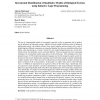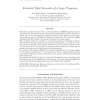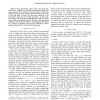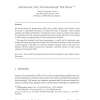158 search results - page 19 / 32 » Coinductive Logic Programming with Negation |
JMLR
2008
13 years 8 months ago
2008
The use of computational models is increasingly expected to play an important role in predicting the behaviour of biological systems. Models are being sought at different scales o...
ICLP
2010
Springer
14 years 14 days ago
2010
Springer
We define the Tight Semantics (TS), a new semantics for all NLPs complying with the requirements of: 2-valued semantics; preserving the models of SM; guarantee of model existence...
FUZZIEEE
2007
IEEE
14 years 2 months ago
2007
IEEE
— Fuzzy Description Logics (fuzzy DLs) have been proposed as a language to describe structured knowledge with vague concepts. It is well known that the choice of the fuzzy operat...
JAPLL
2007
13 years 8 months ago
2007
We extend answer set programming (ASP) with, possibly infinite, open domains. Since this leads to undecidable reasoning, we restrict the syntax of programs, while carefully guard...
ASP
2003
Springer
14 years 1 months ago
2003
Springer
Abstract. Ordered Choice Logic Programming (OCLP) allows for preferencebased decision-making with multiple alternatives and without the burden of any form of negation. This complet...




